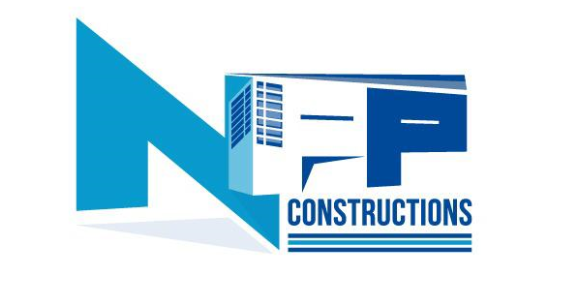The Psychology of Automation: Why We Prefer Autopilot in Modern Tasks
From the moment we wake to smartphone alarms to falling asleep with automated lighting, our lives are increasingly managed by systems designed to reduce cognitive load. This shift toward automated living isn’t merely technological—it’s fundamentally psychological, tapping into deep-seated cognitive mechanisms that have evolved over millennia. Understanding why we gravitate toward autopilot reveals not only how our minds work but also how modern systems leverage these tendencies to shape our behavior.
Table of Contents
1. The Allure of Effortless Execution: Defining Cognitive Automation
From Muscle Memory to Mental Shortcuts: How Our Brains Seek Efficiency
Our brains are efficiency engines, constantly optimizing for energy conservation. This principle extends from physical actions—like the muscle memory that enables us to type without looking at keys—to complex cognitive processes. Nobel laureate Daniel Kahneman’s research on System 1 and System 2 thinking reveals how our minds default to automatic, intuitive processing whenever possible, reserving deliberate analytical thought for novel situations.
Cognitive automation manifests through:
- Habit formation: Neural pathways that strengthen with repetition
- Chunking: Grouping information into manageable units
- Pattern recognition: Identifying familiar sequences to predict outcomes
The Modern Landscape: Where Automation Pervades Work and Play
Contemporary life presents an unprecedented array of automated systems. From algorithm-curated social media feeds to navigation apps that eliminate wayfinding, automation has become the invisible infrastructure of daily experience. In professional contexts, workflow automation tools handle repetitive tasks, while in entertainment, streaming services automatically play next episodes, reducing decision points.
| Domain | Automation Example | Cognitive Benefit |
|---|---|---|
| Transportation | Cruise control | Reduces sustained attention demand |
| Communication | Email sorting algorithms | Minimizes prioritization effort |
| Entertainment | Autoplay features | Eliminates content selection friction |
Autopilot as a Feature, Not a Bug: The Evolutionary Advantage
Cognitive automation isn’t a modern corruption of pure thought but rather an evolutionary adaptation. Our ancestors survived by automating frequent tasks—recognizing edible plants, navigating familiar terrain—freeing mental resources for threat detection and social dynamics. Contemporary neuroscience confirms that the basal ganglia, responsible for habit formation, developed precisely to enable this cognitive offloading.
“The automation of advanced skills is what makes expertise possible. Without it, we would be perpetual beginners, forever struggling with basics.” – Cognitive psychologist John Anderson
2. The Mental Payoff: Why Letting Go Feels So Good
Conserving Cognitive Resources: The Science of Decision Fatigue
Roy Baumeister’s seminal research on ego depletion demonstrates that willpower and decision-making capacity are finite resources that diminish with use. Automation directly counteracts this depletion by reducing decision points. A study published in the Journal of Personality and Social Psychology found that participants who automated simple choices preserved cognitive resources for complex problems, performing significantly better on subsequent challenging tasks.
The Flow State Facilitator: How Automation Clears the Path for Deep Engagement
Mihaly Csikszentmihalyi’s concept of flow—a state of complete absorption in an activity—relies on the automation of subsidiary skills. A pianist doesn’t achieve flow by consciously thinking about finger placement but by automating technique to focus on musical expression. Similarly, digital interfaces that automate routine interactions create conditions where users can enter flow states more readily.
Reducing the Friction of Failure: Lowering the Stakes of Participation
Automation reduces the psychological barrier to entry for new activities. When systems handle complex initial steps, users experience less performance anxiety. This principle explains why guided modes in software applications increase adoption rates—by automating the learning curve, they make competence feel immediately accessible.
3. Designed for Disengagement: How Systems Encourage Autopilot
The Psychology of User Interface: Guiding Actions with Visual Cues
Interface design leverages principles from Gestalt psychology to create intuitive pathways. Proximity, similarity, and continuity organize elements to suggest automated sequences. Color psychology directs attention—red for stops, green for goes—while progressive disclosure reveals complexity only as needed, creating a sense of effortless progression.
Predictive Patterning: Creating Environments Where Intuition Reigns
Systems that successfully encourage autopilot employ predictive patterning—arranging interactions to match users’ mental models. Amazon’s 1-Click ordering exemplifies this principle, reducing a multi-step process to a single action that feels instinctive. The more accurately a system anticipates user goals, the more completely cognitive load is transferred from user to interface.
Case in Point: The Seamless Automation in Le Pharaoh
Digital entertainment platforms provide compelling examples of automation psychology in action. These systems are meticulously engineered to minimize friction while maximizing engagement through strategic automation.
Golden Riches Activation: The Anticipation of Automated Rewards
The psychology of variable rewards—identified by B.F. Skinner and applied in digital design—creates powerful engagement loops. When systems automate the delivery of unexpected bonuses, they tap into dopamine pathways associated with anticipation. This mechanism explains why automated bonus features can feel more rewarding than those requiring active pursuit.
FeatureSpins: Streamlining the Path to Enhanced Engagement
Automated feature activation serves as a cognitive shortcut to premium experiences. By eliminating intermediate steps between trigger and reward, these systems create a seamless transition that maintains engagement momentum. This design principle reflects the broader psychological truth that reducing action-reward latency increases perceived value.
Bonus Buy: The Ultimate Expression of On-Demand Automation
The ability to instantly access special features represents the apex of automation psychology—the complete elimination of uncertainty and waiting. This mechanic appeals to our preference for immediate gratification while demonstrating how systems can cater to our desire for control over automated experiences. For those interested in experiencing these automation principles firsthand, the demo slot le pharaoh provides an accessible context to observe how automated features influence engagement.
4. The Hidden Trade-Off: What We Gain and Lose on Autopilot
The Efficiency Paradox: Saving Time vs. Diminishing Mastery
While automation creates immediate efficiency, it can undermine long-term skill development. Research on “deskilling” shows that when systems perform complex operations, users retain only superficial understanding. NASA pilots who transitioned from manual to highly automated cockpits showed diminished raw flying abilities—a phenomenon observed across domains from navigation to mathematical calculation.
The Attenuation of Agency: When Convenience Undermines Sense of Control
Excessive automation can create what psychologists call “locus of control externalization”—the sense that outcomes are determined by systems rather than personal agency. Studies in human-computer interaction reveal that users who feel reduced control experience less satisfaction, even when achieving better results through automation.

